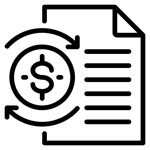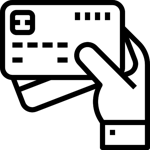- 8 minute read
- Business Management Tips
- Industry Insights
Beginner
Get a behind-the-scenes-look into FareHarbor's 2024 season

Whether or not to seek a small business loan is a decision that each business must make for themselves by weighing the overall pros and cons. Even if you’re not planning on taking on a small business loan right now, it’s good to understand how lending can impact your business.
FareHarbor does not advocate for any particular loan or loan type but we want to continue to make as many resources available as possible to our clients to help your business grow.
This guide will provide an overview of common small business loans (Americas). Please visit our Help Center to learn more about specific loan details available in your region (Americas & Global), state or city.
 The first step in getting a small business loan is to determine how much money you need and what you intend to use the loan monies for. Any lender will want to know how much funding you are seeking as well as a general understanding of how the loan will be used. Each lender will have their own set of requirements and underwriting guidelines.
The first step in getting a small business loan is to determine how much money you need and what you intend to use the loan monies for. Any lender will want to know how much funding you are seeking as well as a general understanding of how the loan will be used. Each lender will have their own set of requirements and underwriting guidelines.
In general, it is best practice to start by getting your financial and business statements in order. Lenders will consider how long you have been in business, your annual revenue, your ability to pay back the loan, your personal credit score, and whether you have previously filed for bankruptcy or have liens on your personal property or business. They will likely also require both business and personal tax returns, bank statements, business tax ID number, social security numbers, and IDs of all owners/stakeholders.
Another important consideration, particularly in the digital age, is to get your online presence in order before applying for a loan. Review any online profiles and postings, as a review of your business may include taking a look at any publicly available online information. This can include your company’s website, social media accounts such as Facebook, LinkedIn, Twitter, and others, as well as online reviews. Lenders may also view the primary owner’s personal social accounts, so make sure to update those as well.
The SBA’s mission is to support small businesses in the United States and further their growth throughout the country. They do so by connecting entrepreneurs with lenders and funding to help them plan, grow, and start their businesses through a variety of different programs and educational support.
There are three different types of SBA loans, each with its own terms, advantages, and disadvantages:
Generally speaking, the SBA offers lower interest rates and longer-term payment options than traditional lenders. They also have strict guidelines and the process can be lengthy and time-consuming.
 Business Term Loan
Business Term LoanBusiness term loans are more traditional loans, structured to allow a small business to borrow a lump sum of money from a lender that is then paid back in set installments over time. The “term” that defines a “term loan” is derived from the term repayment length of the loan.
Online and local banks offer term loans with varying interest rates and repayment options depending on which lender you select. One of the benefits of a term loan is the predetermined payment structure and its suitability for a wide range of businesses. Lenders are able to set their own requirements for qualification including (but not limited to):
Business term loans are also available for specific business expenses, such as new equipment needs, real estate investments, or inventory purchases.
 A business line of credit (LOC) is just what it sounds like — it infuses cash into a business to be used as needed. Similar to the way a personal credit card works, you don’t pay interest until funds are used. A line of credit is a flexible loan that allows a borrower to borrow up to a certain amount, spend it when and how they determine necessary, and then pay interest on only the portion of the money (or line of credit) that they actually use. The primary difference between a LOC and a business credit card is that because a LOC is technically cash, it can be used to cover certain expenses that a credit card cannot.
A business line of credit (LOC) is just what it sounds like — it infuses cash into a business to be used as needed. Similar to the way a personal credit card works, you don’t pay interest until funds are used. A line of credit is a flexible loan that allows a borrower to borrow up to a certain amount, spend it when and how they determine necessary, and then pay interest on only the portion of the money (or line of credit) that they actually use. The primary difference between a LOC and a business credit card is that because a LOC is technically cash, it can be used to cover certain expenses that a credit card cannot.
Establishing a line of credit is a common safety net for many small businesses. It is particularly beneficial for financing and supporting short-term business needs, or to tap into when an emergency or unplanned situation arises. Although the flexibility of a line of credit is appealing to many business owners, drawbacks include lower borrowing limits, the potential for spending misuse, and that they can be more difficult to qualify for.
 Technically, invoice factoring is not a loan, but it allows you to turn your current outstanding invoices into instant cash by selling them to a company — at a discount. This company then collects the money from your customers. A fee is taken out of the original total invoice amount to pay the lender as a sort of convenience fee to the business owner to turn the invoices into cash-in-hand. One of the benefits of invoice factoring is that there is nothing to “pay back.” However, you must consider the cost/benefit of the revenue loss caused by selling your invoice balance at a discounted rate as well as any associated fees.
Technically, invoice factoring is not a loan, but it allows you to turn your current outstanding invoices into instant cash by selling them to a company — at a discount. This company then collects the money from your customers. A fee is taken out of the original total invoice amount to pay the lender as a sort of convenience fee to the business owner to turn the invoices into cash-in-hand. One of the benefits of invoice factoring is that there is nothing to “pay back.” However, you must consider the cost/benefit of the revenue loss caused by selling your invoice balance at a discounted rate as well as any associated fees.
Invoice financing differs from invoice factoring in that financing allows you to keep control of your invoices and deal with your customers directly. In this instance, invoices are used as collateral to support a cash advance from a lender. You would receive all of the invoice money upfront and repay in installments, regardless of when a customer may pay you back.
If you do not qualify for or do not wish to take out a traditional business loan, you might consider taking out a personal loan to cover business expenses. Personal loan qualifications focus on your personal finances and credit score rather than your business history and financial statements.

Most business owners already have at least one business credit card for emergencies or recurring expenses. This form of lending provides for easy access to a revolving line of credit with a set credit limit and interest rate. Business credit cards are a great option for many small business owners because they are typically easier to qualify for and they operate in the same way as a personal credit card. As a result, most people are already familiar with the lending and repayment structure.
Business credit cards are also a great way to build credit. Depending on the card you select, you may receive rewards and incentives for dollars spent. Explore business credit cards from major banks who are offering 0% APR for the first 12 months, such as: Chase, Discover, or American Express.
 Considerations for New Businesses
Considerations for New BusinessesGenerally, loan options are not available for startups or businesses that have not been operating for at least two years. If that describes your company, you might consider a business credit card or a personal loan instead.
Education is key when deciding between different loan products. Small business loans will undoubtedly provide much relief and will be a huge asset in helping our industry to rebound following the pandemic. As with any decision to take on debt, it is important to weigh your decision carefully.
If you have any further questions about your business or specific actions you can take, please reach out to our 24/7 Support team at [email protected].